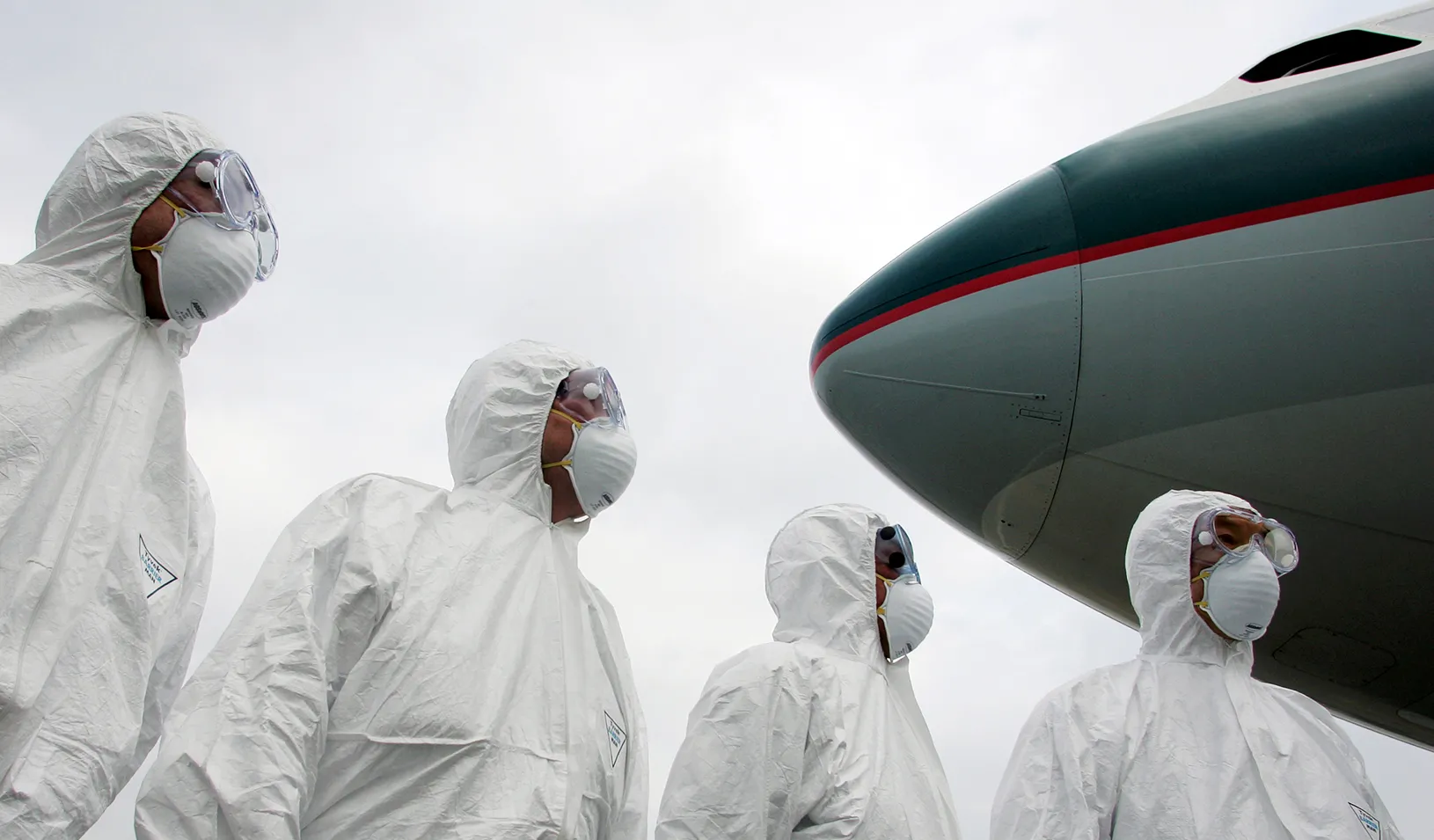How Fear of Contagious Diseases Fuels Xenophobia
Fear of contagion makes people irrational.
July 28, 2015

Throughout history, minority or “out” groups have been blamed for the spread of infectious disease. Reuters/Alex Hofford/Pool
Throughout history, minority or “out” groups have been blamed for the spread of infectious disease. In medieval Europe, for instance, Jews and gypsies were among those accused of spreading the deadly bubonic plague. In 1793, during the yellow fever epidemic in Philadelphia, local officials singled out actors, vaudevillians, and artists for transmitting the disease. But what is it about the fear of contagion that makes otherwise rational people buy into rumors about those they consider to be outsiders?
Stanford GSB professor Hayagreeva “Huggy” Rao and recent graduate Sunasir Dutta sought to find out. “We wondered what were the ways in which these entirely unfounded rumors become more believable,” says Dutta, the lead researcher on the study. “And one answer is that they become believable if people are already panicked about the risk of contagion.” In other words, fear of biological contamination breeds greater fear of cultural contamination.
To test their hypothesis, Rao and Dutta set up a quick pilot study online. Participants in one condition were told that new strains of flu had recently emerged, and they were asked to imagine where the strains might have come from and how to stop their spread. Then they were asked whether America should institute a pathway for illegal immigrants who were already in the country to become legal citizens. Those in the control group were simply instructed to consider legalization pathways for illegal immigrants.
As predicted, merely contemplating contagion made respondents less likely to support immigrant legalization measures. “We found that being told about these new strains of flu at least slightly changed people’s views on whether there should be a pathway for legalization,” says Dutta. Though the difference was small, the results are significant because the respondents weren’t deciding whether to allow foreigners into their country; they merely had to determine whether to confer legal status on those who were already there. Practically speaking, the implications are clear: “Don’t do immigration reform during flu season,” says Rao.
The researchers acknowledge the pilot study was relatively weak, “due mainly to the problem of striking fear into people during an online survey,” says Dutta. “We had to make sure we got them to really think about disease instead of just clicking ‘next.’” But he is convinced the results would be that much more pronounced in a real-world setting.
Indeed, they uncovered similar results using a historical example. While examining mutinies against the British Raj on the Indian subcontinent — a subject easy to research because of the meticulous records the British kept — Rao and Dutta began wondering if such attacks might have been triggered or exacerbated by fears of contagion. They focused on the 1857 Sepoy Mutiny, in which native Indian soldiers in Bengal staged a violent revolt against their British officers following the spread of an insidious rumor: that the Brits had greased their guns with either pig fat, considered offensive to Muslims, or beef fat, which offended Hindus. “As a rumor, it was brilliant, because it affected soldiers of both faiths,” says Dutta.
Digging further, the researchers detected a clear pattern in which regiments were more inclined to believe the rumor and rebel. Several months earlier, a widespread cholera outbreak had inspired some creative if naive practices to ward off the disease. Villagers believed that sharing an offering of a chapatti, or round unleavened bread, with a neighboring village would protect them from infection. That village would in turn pass it on “in a chain-mail fashion,” as the study explains, theoretically thwarting the disease.
Records show that the “chapatti ritual” bore no correlation to the actual incidence of cholera. The disease afflicted villages indiscriminately, whether or not they had shared their bread. But what Dutta and Rao discovered was that regiments from areas that had been exposed to the myth of inoculation by chapatti were more likely to mutiny than those that hadn’t. “What our study shows very clearly is that exposure to discourse about contagious disease activates xenophobic tendencies in people,” says Rao. “When you’re exposed to this discourse, you’re much more likely to believe rumors.”
One key takeaway, says Dutta, is that the fear of contagion makes people irrational. He cites the start of the AIDS epidemic in San Francisco in the 1980s, when conservative groups focused on the immorality of homosexuality rather than on managing the risks to public health. “Our study shows how public health concerns can influence our perceptions in areas where you would expect rationality to prevail,” he says.
The study has far-reaching implications for managing ethnic conflict, which is often preceded by rumor. “Somebody’s contaminating the water supply, somebody’s contaminating the food — these kinds of rumors are very common,” says Dutta. “And sometimes they lead to violence.” The results are particularly useful in the very early stages of epidemics, when the origins of a virus are not yet clear, he says. “That’s where a lot of hearsay and irrational exclusion takes hold.”
Hayagreeva “Huggy” Rao is the Stanford GSB Atholl McBean Professor of Organizational Behavior and Human Resources. Sunasir Dutta, a recent graduate of Stanford GSB, is a professor at the University of Minnesota’s Carlson School of Management. “Infectious Diseases, Contamination Rumors, and Ethnic Violence: Regimental Mutinies in the Bengal Native Army in 1857 India” appeared in Organizational Behavior and Human Decision Processes.
For media inquiries, visit the Newsroom.
Explore More

Conflict Among Hospital Staff Could Compromise Care

A Sense of Community Helped Spread COVID Conspiracies on Twitter



